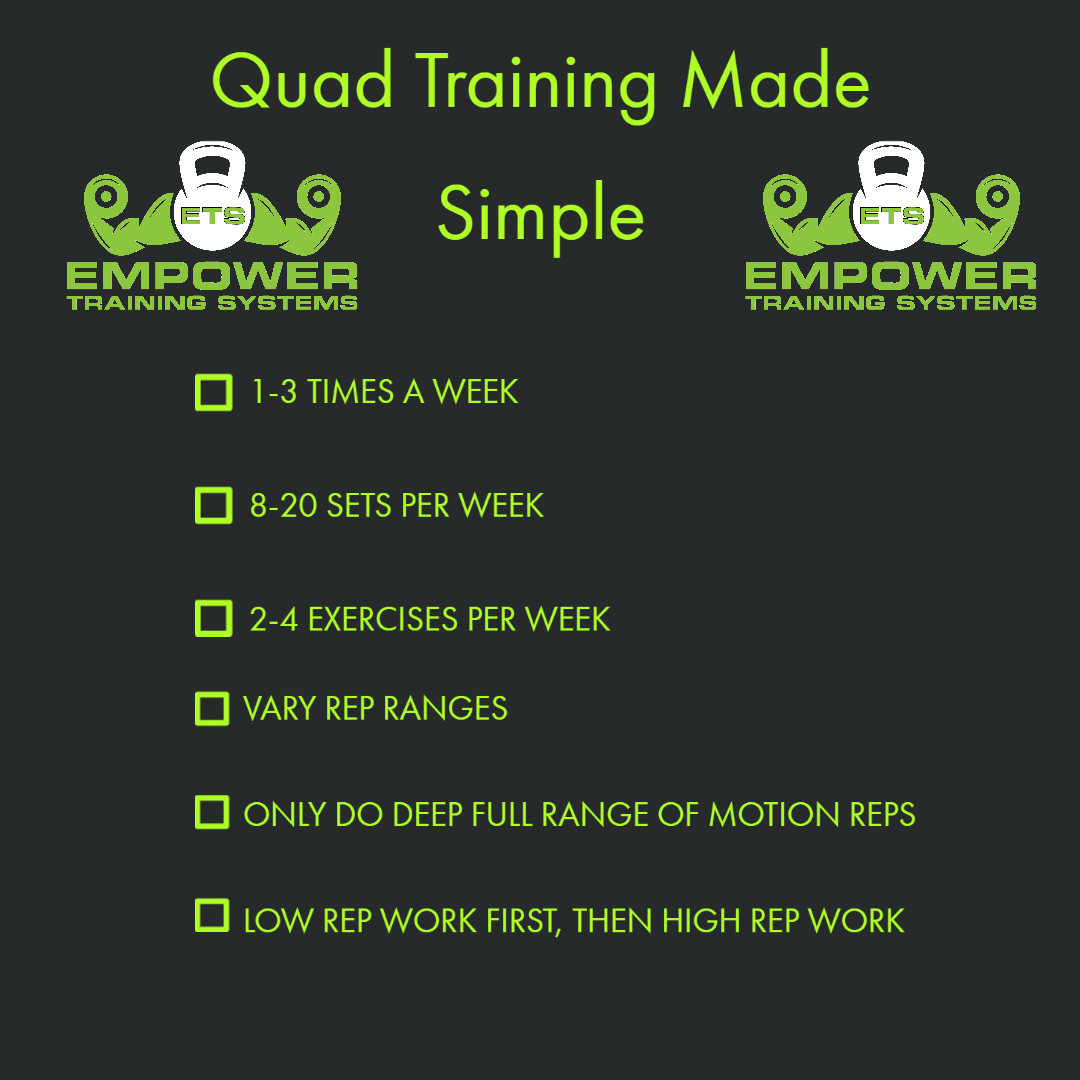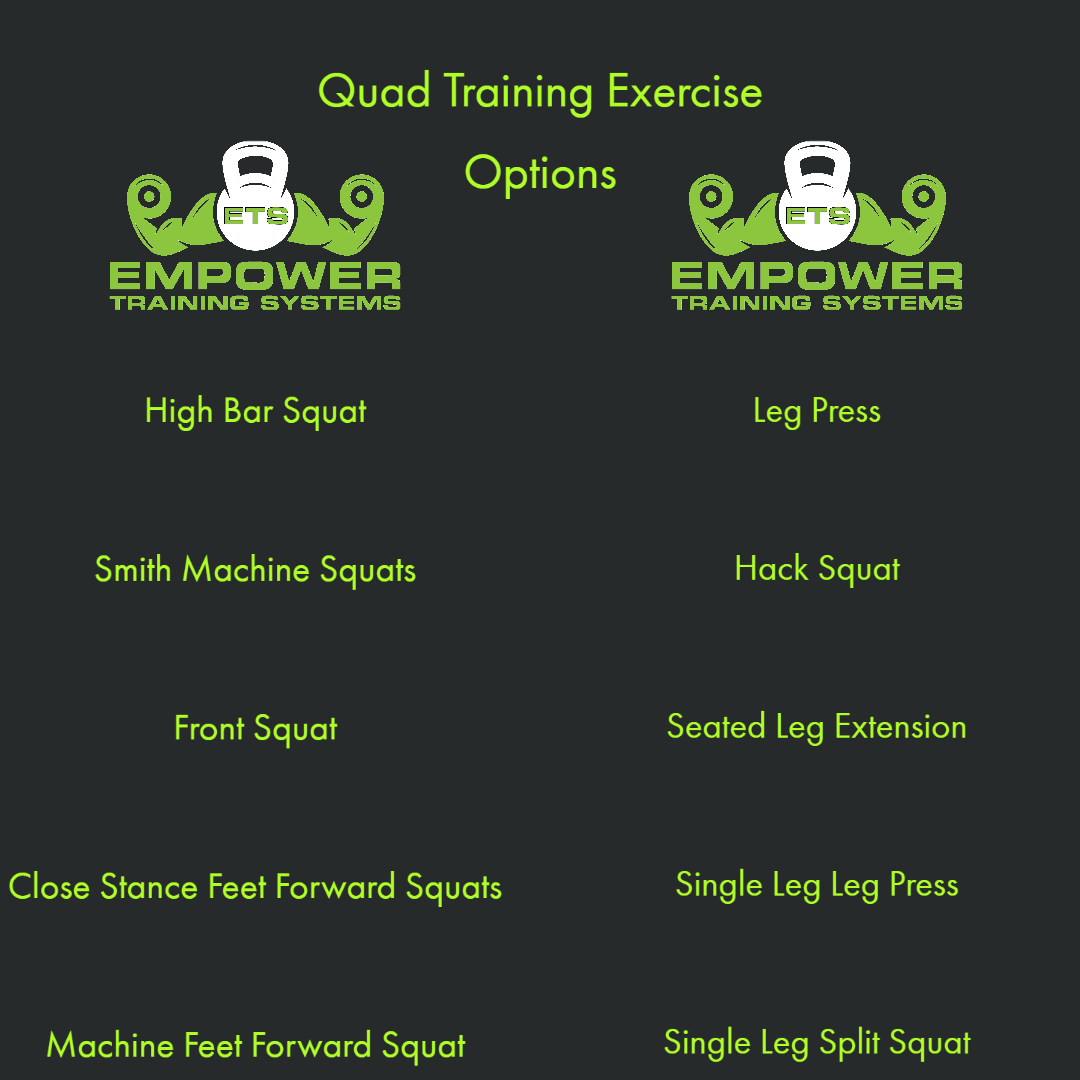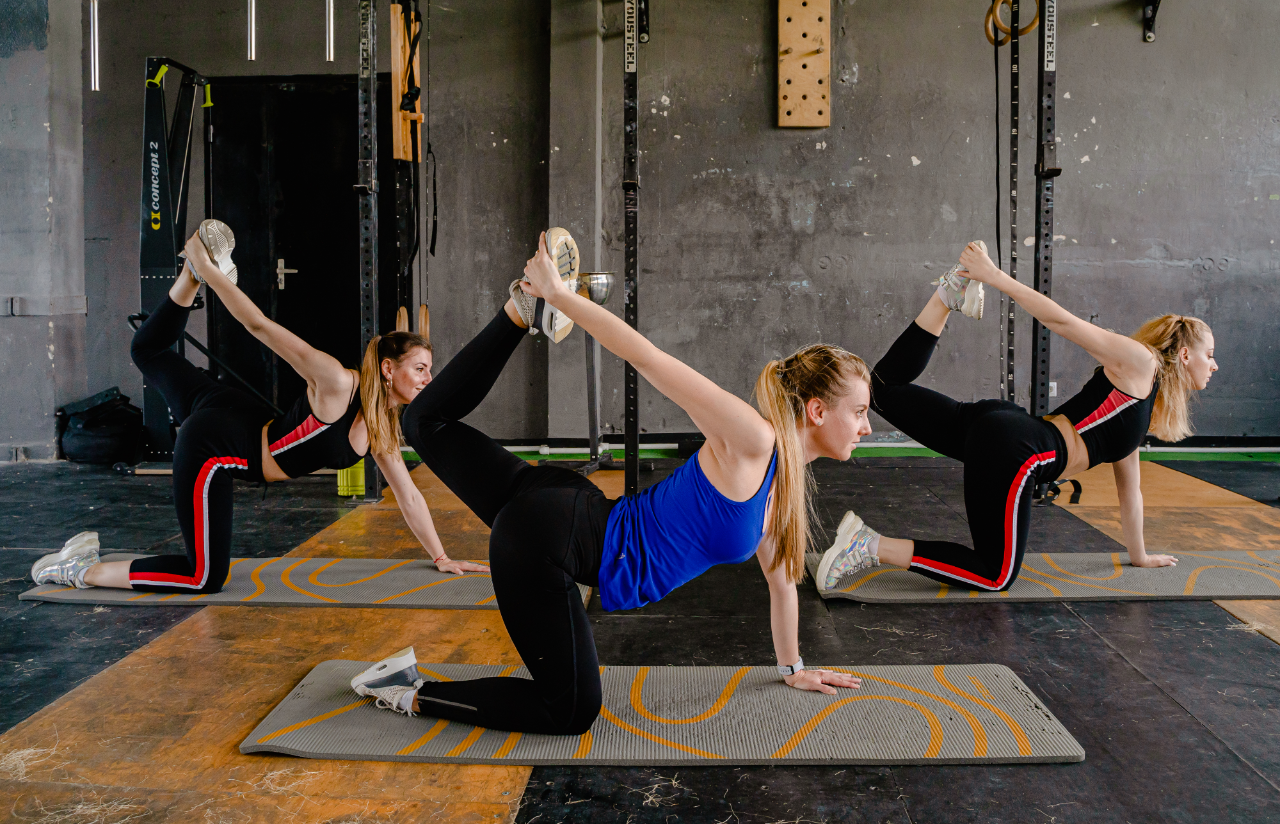Back To The Gym?
Training Made Simple: Quads
Gyms have either started re-opening or soon will, and some of us will have decided to go to the gym for the first time after being cooped up in lockdown conditions. Others will be returning to a long pursuit of greater fitness after a frustrating hiatus from training. You might be wondering if a fresh start is in order. And if so, where to begin?
I’ve written a series of guides on training with you in mind, with each one essentially being the TL:DR walkthrough. This one focuses specifically on training your quads, what to do, how much to do, how often, and where to begin. I hope it helps!

That’s the bare-bones basics of what you need to do in order to develop your quads either for athletic performance or aesthetic reasons. Stick within these guidelines, bearing in mind the below further details, and you can’t really go wrong.
These guidelines assume your training includes heavy back training, hip hinge training, and chest training covered in the hamstring, back, and chest training guidelines. These recommendations are for direct quad work.
Quad training can generate a lot of systemic fatigue due to the size of the quads.
When using squat variations the axial loading stresses the whole body and not just the legs. High rep sets of ten or more are best reserved for machines and leg presses, as this limits systemic fatigue build-up and the back cannot be a limiting factor for the amount of weight used.
Your squat variations can then fill the gap of the lower repetition ranges with heavier loads. That said, you never have to barbell squat to train your legs. You could instead use heavy plate loaded leg presses and hack squats to get powerful quads from that. Well – if you train to the full range of motion, so your knees essentially nearly touching your shoulders.
Range of motion is always important, but there are particular muscle groups and movements you more often see people cheat and do extra partial reps. Squats should at least go below parallel, and if your goal is muscle growth more than strength they should be strictly controlled and as deep as possible. Same with leg presses. There is almost nothing so ego-driven and useless than someone loading plates and plates on a leg press in the gym and then proceeding to slightly unlock and then lock their knees. Do the exercise right.
Do not rush into the maximum sets of quad training per week, start at the bottom of the range and work up over time. You can add a set per workout when you are not sore more than 24 hours after you finished your last workout if performance did not decline from the previous week’s results.
I have some recommendations for quad exercises to choose from for you below:

I hope that helps. If you want to talk about quad training, I’m more than happy to chat with you- just DM me on Instagram and ask me any questions you might have. If you’re interested in online coaching or personal training, you can hit me up here.
Previously published Training Made Simple Guides can be found here-
1.Training Made Simple : Glutes
2.Training Made Simple : Biceps
3.Training Made Simple : Chest
Take It easy
Mike Billington
Empower Training Systems




